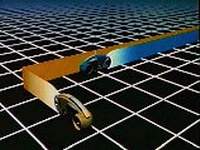

|
About the
Author |
|
 |
|
Introduction A couple years ago supercomputers were usually built from the bottom up in terms of hardware and software to achieve the lofty goals of High Performance Computing. With the fast growing technology of personal computers and the fact that those systems have become bulk ware, the idea to build supercomputers out of standard components is becoming common. A major part of commodity based systems is the network and communications in general. In contrast to “one-box-supercomputers”, the liberty to interconnect the computational nodes (processors, memory) is restricted. The only feasible way to communicate is through the interfaces provided by the off-the-shelf computer (system bus). Depending on the final field of applications the network has to be chosen or designed wisely (NIC, switches, topology and of course the protocol). Another very important factor is the portability of the applications among other (super)computers. It would be a waste of time if applications would have to be rewritten every time the system changes. The most common used standard that supports parallel applications and libraries nowadays is MPI (the Message Passing Interface) which defines the syntax and semantics of a core of library routines for programs in Fortran or C. With a large number of computational nodes connected by a fast network on one side and a portable library for applications on the other, it is important that the protocol between these two worlds has to be designed the way to provide the maximum of the hardware resources to the applications. It is exactly this part what the current website is all about. The related project is the evaluation and first implementation of the Portals API on TNet. Portals is the data movement layer that is used on one of world’s fastest supercomputers at Sandia National Laboratories while TNet is a complete network developed by Supercomputing Systems Zurich, Switzerland. Thanks to |
||